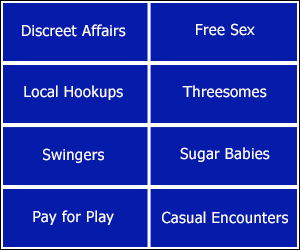I looked at the number of strip clubs on TUSCL in October 2008 and compared them to the number of strip clubs on TUSCL in October 2018. The 2008 count for each state is on the left with an arrow pointing to the 2018 count. The United States has seen a 17.63% decline in strip clubs in just the last decade. Canada has seen a 24.89% decline in strip clubs in just the last decade. The number of listings for Mexican strip clubs has increased 23.26%. That is probably attributed to gringos getting savvy on the internet and finding and adding places that have been around for years.
United States October 2008: 2,536 United States October 2018: 2,089
Alabama 32--->24 Alaska 8--->6 Arizona 55--->41 Arkansas 10--->9 California 194--->159 Colorado 23--->21 Connecticut 38--->26 District of Columbia 7--->9 Delaware 6--->4 Florida 205--->187 Georgia 67--->47 Hawaii 21--->15 Idaho 9--->8 Illinois 83--->71 Indiana 73--->55 Iowa 34--->28 Kansas 30--->26 Kentucky 43--->31 Louisiana 50--->41 Maine 5--->3 Maryland 51--->37 Massachusetts 32--->28 Michigan 86--->71 Minnesota 32--->22 Mississippi 10--->10 Missouri 35--->22 Montana 8--->6 Nebraska 10--->9 Nevada 42--->45 New Hampshire 2--->2 New Jersey 117--->107 New Mexico 11--->6 New York 134--->107 North Carolina 88--->70 North Dakota 4--->3 Ohio 121--->104 Oklahoma 45--->32 Oregon 87--->72 Pennsylvania 120--->102 Rhode Island 11--->9 South Carolina 55--->32 South Dakota 14--->13 Tennessee 33--->25 Texas 200--->179 Utah 14--->9 Vermont 3--->1 Virginia 39--->30 Washington 15--->14 West Virginia 44--->33 Wisconsin 71--->69 Wyoming 9--->9
The District of Columbia and Nevada were the only locales to gain strip clubs. Nevada’s gain is deceiving in that many of its listings are brothels that were not yet listed on TUSCL back in 2008. The District of Columbia is the only locale that seems to have truly added strip clubs. Mississippi, New Hampshire, and Wyoming had the same number of clubs in 2008 as 2018. All the forty-six other states lost strip clubs.
Canada October 2008: 237 Canada October 2018: 178
Alberta 28--->19 British Columbia 25--->15 Manitoba 4--->4 New Brunswick 4--->4 Newfoundland 3--->3 Northwest Territory 0--->1 Nova Scotia 2--->0 Ontario 103--->71 Quebec 66--->61 Saskatchewan 1--->0
The only province to have a net gain in strip clubs was the Northwest Territory. (I was the one who added the lone stripper venue in Yellowknife). Manitoba, New Brunswick, and Newfoundland have kept the same number of strip clubs between 2008 and 2018. The four most populous provinces in Canada all lost strip clubs: Ontario, Quebec, British Columbia, and Alberta. Saskatchewan and Nova Scotia are now goose eggs, or without any strip clubs.
Mexico October 2008: 107 Mexico October 2018: 132
The number of strip clubs in the United States is actually lower than what the above statistics show. Some of the listings on TUSCL are for swinger clubs, massage parlors, and lingerie studios. These are not true strip clubs. There is also error in that some clubs exist and are not listed on TUSCL, whereas there are also likely listings on TUSCL of clubs that have closed and were not removed.
I wonder how many strip clubs will still be around in October 2028?


How did you get the data for 2008; you had it saved from 10 years ago?